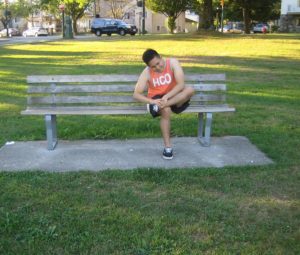The calf muscle is comprised of 2 muscles – gastrocnemius and soleus muscle. The calf muscle can end up damaged if they are overly stretched. An injury to the muscle can range from a minor strain that can be managed at home or a serious tear that requires treatment by a doctor.
What are the possible causes?
A calf muscle injury usually occurs during sports where there is a need to push off using the foot rapidly or sudden burst of speed such as in soccer, tennis and even running.
The abrupt movement can strain on the calf muscle, extending it beyond its normal limits. This can occur suddenly or over time.
What are the indications of a calf muscle injury?

The signs and symptoms depend on the severity of the damage to the calf muscle.
If the damage is only a strain, there is strong tugging in the lower leg that can be uncomfortable along with a twinge of pain. Serious tears to the muscle can cause intense pain and causes difficulty in walking.
Management
In most cases of injury to the calf muscle, it can be managed at home with the following measures:
- The injured leg must be allowed to rest for 1-2 days.
- Apply an ice pack or cold compress on the affected muscle for 10-20 minutes at a time to control the swelling. Place a cloth or towel between the ice pack and the skin. The application should be done 1-2 hours for the next 3 days or until the swelling settles.
- Cover the lower leg using an elastic bandage to reduce the swelling. Avoid wrapping too tightly since it can increase the swelling below the affected area.
- When medications are used, carefully read and follow the instructions on the label.
- Activity must be avoided especially those that worsens the pain. Return to exercise must be done gradually as the individual starts to feel better.
Quick Note / Disclaimer
The material posted on this page on calf muscle injury is for learning and educational purposes only. To learn to recognize and manage muscle injuries including on the calf muscle, register for a first aid and CPR course with Toronto First Aid.
